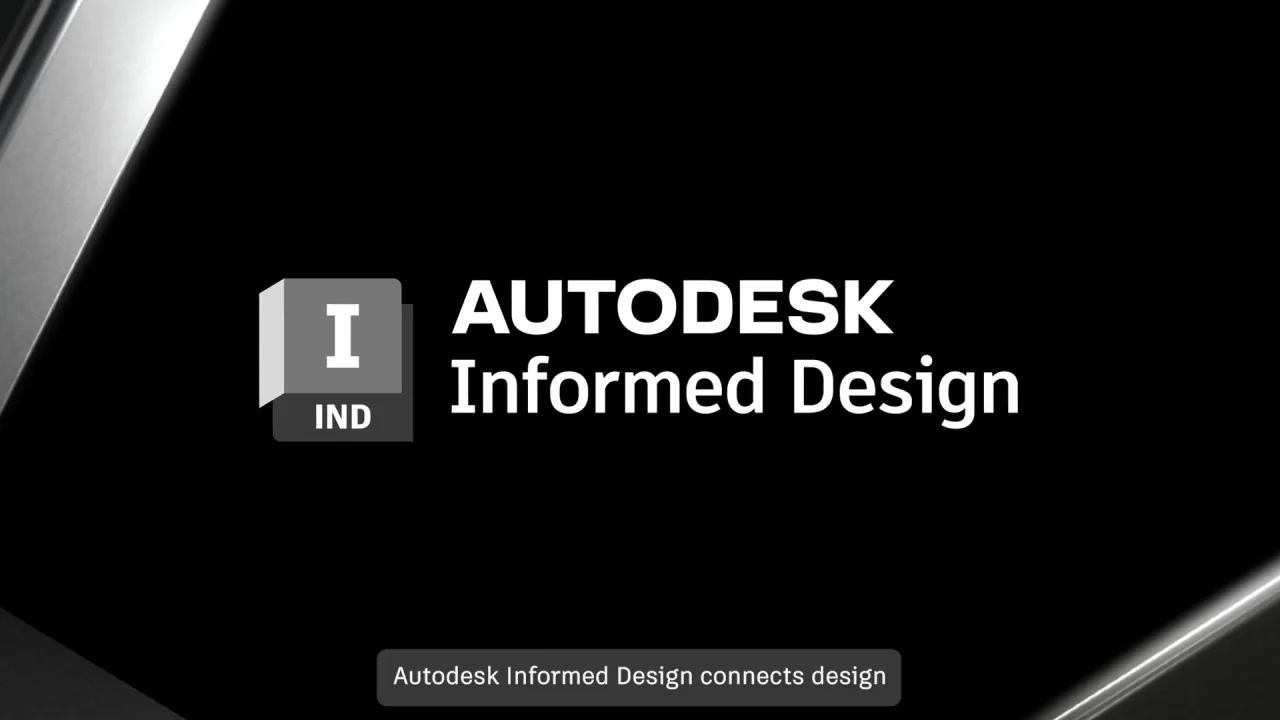As Autodesk Revit marks its 25th anniversary since its initial release on April 5, 2000, the launch of Revit 2026 brings a suite of eagerly awaited enhancements that promise to streamline your BIM workflows. Key features include the Accelerated Revit Graphics Tech Preview and the ReCap Pro Mesh Revit plugin. Continuing our commitment to meeting the needs of customers and directly incorporating your feedback and requests, Revit 2026 delivers substantial improvements across modeling capabilities, design coordination workflows, and documentation processes.
Here are a few highlights for you and your teams:
Introducing Recap Pro for Revit plugin
As the industry increasingly focuses on sustainable practices, such as retrofitting existing buildings and adaptive reuse projects, Autodesk is proud to introduce the new ReCap Mesh Revit plugin to support the efforts to minimize environmental impact and reduce resource consumption. This plugin enables the integration of large quantities of reality capture data into Revit without affecting project performance. Users can add mesh data to their projects and easily toggle between different layers to allow visibility, quick navigation to specific areas and features, and streamline the modeling process, saving valuable time.
The plugin also enables the creation of Revit Families from linked mesh geometry. Once in the Revit family editor, users can view their meshed objects and add connection points, extrusions, model lines, and parameters as needed. This comprehensive set of tools enhances the efficiency and flexibility of working with Reality Capture data in Revit.
Revit 2026: New developments and enhancements
In addition to the scan-to-mesh Recap Pro and Revit workflow, we are excited to share a selection of development highlights in Revit 2026 that improve your workflows for site modeling, structural detailing, data sharing and interoperability, and documentation.
As always, your feedback continues to help us improve and refine Revit as a number of these enhancements are sourced directly from your Revit Ideas, marked with the “”.
Accelerated Revit Graphics Tech Preview
As your project (and team of collaborators) expands, we understand that model performance is extremely important for your productivity and for your sanity. The Accelerated Revit Graphics Tech Preview is a groundbreaking initiative designed to enhance the visual performance and responsiveness of Autodesk Revit.
By leveraging advanced graphics technologies, including open-source components based on USD (Universal Scene Description) and Hydra, this tech preview significantly improves the navigation speed in 3D and 2D views. This enables smoother model inspection when navigating from one project area to another to edit your model more efficiently, even with large datasets.
The performance of the accelerated graphics supports more iterative design processes, enabling architects and engineers to explore and refine their ideas with greater agility. With the Accelerated Revit Graphics Tech Preview currently under development, you can learn more and provide feedback here.
Join the Revit development team on May 13, 2025 at 8:00 a.m. PST to learn all about the new Accelerated Graphics Tech Preview. During this session, you can see a live demo of the new graphics pipeline that we’re working on, and we will be answering your questions.
Streamline documentation
Our vision is to automate documentation so that users can focus on higher value, creative, and cognitive work. “View to Sheet Positioning and Automated Placement” is just one way Revit 2026 automates repetitive and mundane documentation tasks. This new feature allows for precise positioning of views on sheets, reducing the need for manual adjustments and improving the consistency of documentation— ultimately saving you time and making it easier to manage your smaller to complex projects and delivering high-quality outputs.
Shared parameter use in family labels has been expanded to include Callout Heads, Elevation Marks, Section Marks, and View References. This functionality provides a flexible method to include additional View data in these types of view objects. When shared parameters are added to View references, they will display the parameter values defined in the selected target view. As with other View parameters, shared parameters in View References can be included in a View List schedule.
Toposolid improvements
Since its introduction, we’ve continued to build upon site design tools guided by your feedback. In this Revit 2026 release, there are several improvements that make for a more flexible, efficient and accurate modeling experience:
- Enhancements for existing sub-division functionality, including recessed sub-divisions and a new sub-division category for more efficient modeling and model flexibility
- Accuracy improvements for collaboration workflows between Revit and Civil 3D and Civil 3D files linked from Autodesk Docs
- Users are now able to increase the toposolid point threshold to 50,000 points using the Revit.ini file. The default threshold has been increased from 10,000 in previous versions to 20,000 points in Revit 2026.
- Topography cut void stability improvements
Structural Features
For our structural audiences, we want to highlight a couple of features that will boost your productivity and make it easier to collaborate with your teams.
Parametric rebar cranking
We understand that manually modeling cranked bars can be time consuming, and it can get complicated to maintain the right cranks in the right place as revisions occur. Revit 2026’s Parametric Rebar Cranking capability empowers structural engineers and detailers to easily model cranked rebar in congested areas to prevent clashes.
Point-to-point modeling
Revit’s legacy behavior for modeling steel elements automatically added setbacks to prevent collisions and focused more on drawing presentation rather than model accuracy and usability downstream. That’s why we’re introducing a new global option in the structural settings that allows users to remove all setbacks with a single click, ensuring elements are modeled precisely from point to point. This function applies to both existing and newly created steel elements in the model. Moreover, users can easily disable this feature at any time to revert to traditional Revit behavior.
MEP improvements
For our MEP audiences, below are featured improvements that enable more accurate modeling and documentation.
Globalized electrical conductors
Previously, Revit only supported the American Wire Gauge (AWG) convention, automatically sizing conductors based on circuit ratings. With the new enhancement, Wire Type and Wire Size have been replaced with cable type and cable size, voltage drop has been removed, and additional conductor details have been added. This update provides greater flexibility in conductor calculations, better serving users outside the US.
Enhanced zoning for HVAC
For MEP engineers, we realize zoning is essential in not only capturing design intent, but also the fundamental basis of equipment selecting, sizing, and distribution routing. That’s why Revit’s HVAC zoning has been enhanced by merging HVAC Zone and System Zone objects into more versatile and powerful Systems Zones. This improvement allows zones to be defined by sketch or by space, includes expanded properties, and supports scheduling and color fill schemes. The consolidation also reduces confusion between previous zoning objects while combining their benefits.
MEP Fabrication
As part of our ongoing improvements in the behavior and reliability of our MEP Fabrication data, several known issues with step-downs have been addressed. This improvement will greatly reduce the irregularities in output that require manual adjustments to flat pattern developments and ensure more consistent behavior across all supported patterns.
Performance and reliability of MEP fabrication configuration reload time has been improved by approximately 70% and eliminates all known disconnects. Note that this was based on a series of customer provided real-world test cases. It does not guarantee zero disconnects in all cases. This is something we are continuously working to improve, and we welcome you to report any cases so we may address them.
The new MEP Content Editor now includes a preview of connectors that provides the ability to inspect the geometry before committing to the model. Connector origin and snap points provide greater clarity, which improves confidence and efficiency when assigning connectors to parts. It is also possible to create a thumbnail from the active preview to enable visual identification in tabular view.
Interoperability and Collaboration
Coordination Models
Cross-disciplinary and across-project-phases workflows with Coordination Models linked from Autodesk Docs gain significant enhancements with this release. With models linked this way, users can now benefit from precise control over what element categories are visible and how they are colored in views. Improvements include Hiding and Revealing Coordination Model Objects and more. Enhanced communication and collaboration among teams with clear visual distinctions can help reduce errors by easily identifying the correct coordination model.
Open standards and IFC
Working with open standards such as IFC has gained a significant productivity enhancement with the introduction of IFC Link Orientation selection. With the IFC Link Orientation, users can now designate the position for where IFC files will link into Revit. This streamlines workflows when linking IFC files where the coordinates within the IFC file do not align with coordinate systems in Revit. Specifying how the IFC Origin will align with Revit coordinate systems will remove tedious rework or re-linking of files which are in the wrong position when referenced into Revit.
Data management
Collaboration and coordination with external data in Revit is essential when working with stakeholders across multiple disciplines and in complex projects. To help streamline the management of external data in Revit, we introduced the new Manage Links Dialog in Revit 2025.2. Now, we have added the ability to Show Imported CAD Files in the Manage Links Dialog. This enables users to easily see and manage the CAD files which have been imported into a Revit model. This enhancement ensures that users have full visibility and control over the data which has been linked or imported into their model, improving collaboration.
Also in the release
- What’s new in Dynamo Core 3.4.1 for Dynamites.
- Enhanced family substitution for Twinmotion for Revit
- Copy/paste points and lines for toposolids, floors, and roofs
- Create wall by room or segment
- Customize layer priority for walls, floors, and roofs
- Browser organization for panel schedules
- Title block scale override
Check the Product Help for full documentation of Revit 2026 and register for the What’s New in Revit webinar, where we cover releases past and present and potential futures for Revit and the AEC Collection.
Take the next step closer to experiencing these features first-hand. Get started with the Autodesk Access application on your desktop. And if you’re not yet a subscriber, be sure to check out a free trial of Revit 2026.
Happy Revit-ing,
The Factory

See What’s New in Revit 2026 Live Webinar
Join Autodesk on April 10, 2025 at 8 am PDT | 11 am EDT | 5 pm CEST
Data Exchange
With Data Exchange, Revit users can easily share and receive subsets of models from a variety of applications – and protect their data securely using ACC. Data Exchanges can be loaded into Power BI to create and share dashboards with other stakeholders, or referenced between other tools, such as Revit, Inventor, Tekla, Rhino, Navisworks, AutoCAD, or Solidworks. Thanks to the ACC Bridge integration, Data Exchanges can be easily shared between ACC projects.
The most recent updates to Data Exchange connectors include significant performance, stability, and capability improvements, such as:
- Power BI (Available through Autodesk App Store): Viewer support for aggregating multiple Data Exchanges into one Power BI dashboard
- General placement improvements allow you to specify where the Exchange should be loaded into your design file – and then the data exchange won’t move on update
- Revit (2023, 2024, 2025, 2026 coming soon – Beta): New Data Exchange Connectors for Revit and Dynamo
- Navisworks (2023, 2024, 2025 – Beta): Creation of data exchanges from Navisworks
- Inventor (2023, 2024, 2025 – Beta): Creating exchanges from the Assembly and Part environments
- Tekla (2022, 2023, 2024 – Beta): Automatic mapping of beams and columns, more granular filtering based on object types and properties, and advanced options for bolts, welds, and concrete elements
- Rhino (8, Beta): Filtering nested elements
Join the Data Exchange Beta Program to access the Beta Connectors and stay up to date about the latest developments by following the APS Blog.
Autodesk Informed Design for Revit
With Autodesk Informed Design, Revit users can incorporate customizable, manufacturable building products into their designs, ensuring unparalleled certainty. This add-in for Revit automates the generation and insertion of Revit Family instances based on customized templates, significantly reducing manual effort and saving valuable time in the design process. By including construction products that are accurate and manufacturable, Autodesk Informed Design helps prevent downstream errors, minimizes rework, and enhances overall project efficiency.
Since its launch last year, Autodesk Informed Design for Revit has introduced several key updates:
- Non-blocking Replace Operation: This feature allows designers to quickly replace instances by selecting an existing variant or generating multiple potential replacements simultaneously. It reduces workflow interruptions and enables designers to continue working on other tasks without delay.
- Update Informed Design Content: Designers can now ensure they are always working with the latest product versions. This feature efficiently manages updates and maintains the integrity of the design model.
- Content Sharing with ACC Bridge: The new integration with ACC Bridge enables manufacturers to publish products to their own project folders and share these folders across other accounts and projects within Autodesk Construction Cloud. This capability saves manufacturers time and effort by allowing them to publish products only once, while recipients receive updates automatically. The integration streamlines content management tasks and enhances collaboration, making it easier for design teams to access and utilize products from various manufacturers in a single location.
To stay up to date with Autodesk Informed Design for Revit, sign up for our newsletter and join our community.
AEC Public Roadmaps

Looking for what’s next in Autodesk AEC Technology? We’re committed to providing transparency for what is in our development pipeline.
That’s why we’ve updated the Autodesk AEC Public Roadmaps to include more of the strategic vision for our product development, in addition to the features and capabilities in development. For Architecture, Structures, and MEP, see the new tab for “Where we are going” to better understand our rationale for making the investments in Revit that we do, and provide feedback directly to our product managers by clicking into the cards and indicating the priority for the work you do.
Bookmark it for easy reference and subscribe to AEC Tech Drop to never miss an update.
Influence your future Revit experience

Provide your valued feedback to our research and product teams
Revit resources
- Revit 2026 Release Notes: Read the full release notes in the Revit Product Help.
- Revit Forum: Have a question about Revit? Take it to the Revit Forum and let the community of Revit users help you sort it out.
- Revit Ideas: Have an idea for making Revit better? Go to Revit Ideas to find, post, and vote for the things you want to see in new versions of Revit.
- Revit Preview Access: Want to see what’s coming in Revit? Sign up for Revit Preview access and give us feedback on new features in Revit before they are released.
Get started
Take the next step closer to experiencing these features first-hand. Get started with the Autodesk Access application on your desktop. And if you’re not yet a subscriber, be sure to check out a free trial of Revit 2026.
The post What’s New in Revit 2026 first appeared on Informed Infrastructure.
